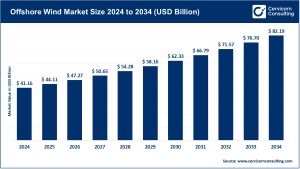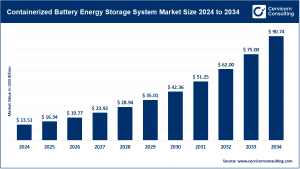Floating Fuel Station Market Overview
The global floating fuel station market is anticipated to expand at a compound annual growth rate (CAGR) of 8% between 2025 and 2034. This growth is primarily fueled by the steady rise in maritime trade, increasing offshore oil and gas exploration, and growing demand for advanced and efficient offshore fueling infrastructure.
Key Market Trends
-
Shift Toward LNG and Cleaner Fuels: Stricter environmental standards, such as the IMO’s emission reduction goals, are accelerating the transition toward cleaner marine fuels like LNG, hydrogen, and biofuels, leading to the development of sustainable floating fuel stations.
-
Technological Innovation: The integration of automation, remote monitoring systems, and IoT-based technologies is improving fueling operations, safety standards, and efficiency across marine fueling platforms.
-
Growth of Offshore Energy Projects: The expansion of offshore oil, gas, and renewable energy installations—especially in Asia-Pacific and the Middle East—is boosting demand for reliable offshore fueling facilities.
-
Government-Driven Infrastructure Expansion: Countries such as Singapore and South Korea are heavily investing in floating LNG bunkering hubs, supporting cleaner maritime operations and enhancing regional fueling capacity.
Get a Free Sample: https://www.cervicornconsulting.com/sample/2566
Market Drivers
-
Rising Global Maritime Trade: With nearly 80% of global merchandise transported via sea routes, the need for accessible offshore refueling solutions continues to grow.
-
Offshore Oil and Gas Expansion: Offshore operations contribute to roughly 30% of global crude oil production, necessitating dependable and mobile fueling systems.
-
Advancements in Fueling Technologies: The adoption of smart fueling solutions and compact LNG storage systems has significantly improved operational efficiency and sustainability.
-
Environmental Regulations: The enforcement of low-emission standards is encouraging the installation of eco-friendly floating fuel stations to support clean marine energy transitions.
Impact of Trends and Drivers
These evolving factors are transforming the market landscape across commercial shipping, naval operations, and offshore industrial segments. The Asia-Pacific region remains the fastest-growing market, driven by extensive port modernization projects and investments in renewable marine energy infrastructure.
Challenges and Opportunities
Although high setup costs and complex regulatory frameworks remain key barriers, innovations in automation, digital integration, and hybrid fueling systems present promising opportunities for market players to differentiate and expand.
Future Outlook
The global floating fuel station market is set for consistent expansion through 2034, as governments, energy companies, and maritime operators increasingly prioritize cleaner, smarter, and more sustainable fueling networks to support the evolving maritime ecosystem.

